#Fred Myton
Text




youtube
Buffalo Bill in Tomahawk Territory (1952)
My rating: 4/10
I don't think this one is very good, with just the most bare-bones plot and clunky writing, but given the terrible quality of the print the DVD I watched was transferred from, it's honestly kind of hard to tell.
#Buffalo Bill in Tomahawk Territory#Bernard B. Ray#Sam Neuman#Nat Tanchuck#Fred Myton#Clayton Moore#Slim Andrews#Charles Harvey#Youtube
1 note
·
View note
Audio
(Motif-Radio) Reggae Pon Top $ 6 2024 Track Listing below:
SINGLES:
ROUND SEVEN VERSION
DILLY CHRIS-MMEETING
MARTEI KORLEY- MONEY
MEDISUN, YEZA, & BLAKKAMORE- NEED NOT APPLY
DERAJAH MEETS 18 PARALLELS- ROW FISHERMAN
GINJAH- THE LORD SAYS
DELLY RANX- SAVE ME NOW
FAR FROM ALASKA & PATO BANTON- SECRET
SER RASTA, MIKEY GENERAL, CEDRIC MYTON, BARBASS SOUND- UN AMOR
BUSHMAN- WHYNE DUNG
ROMAIN VIRGO & MASICKA- BEEN THERE BEFORE
JAH DEFENDER- EVERYWHERE I TURN
RIDDIMS:
GREATER CAUSE RIDDIM
MURDA DEM RIDDIM
FIGHT AGAIN RIDDIM
ESCAPE RIDDIM
DANCEHALL:
SYSTEM OVERLOAD RIDDIM
STIMULANT RIDDIM
TIKEN JAH FAKOLY FT. HORACE ANDY, CHICO CESAR- AFRICAN A PARIS
GYPTIAN & STARFACE- TREAT HER
NUH REGULAR RIDDIM
FRED LOCKS- TRUE RASTAMAN
BARRINGTON LEVY- BETTER THAN GOLD
DON CARLOS- TRAVELING
AGUSTUS PABLO- SOUNDS OF LEVI
HUGH GRIFFITHS- ISRAEL
YABBA U- GIVE THANKS & PRAISES
DENNIS BROWN- 3 MEALS A DAY
KING TUBBYS & YABBA YOU- DELIVER DUB
THE CHANTELLS- BLOOD RIVER
MICHAEL PROPHET- BOOM HIM UP
NAGGO MORRIS- FALSE RASTA
BOB MARLEY- CRAZY BALHEAD
BOB MARLEY- CONCRETE JUNGLE
AGUSTUS PABLO- TAKE IT EASY
FREDDIE MCGREGOR- ROMAN SOLDIERS
DICKY BURTON- GOD IS WATCHING YOU
0 notes
Text
1 note
·
View note
Audio
We head back to poverty row studio PRC for Sam Newfield's DEAD MEN WALK (1943) starring George Zucco, Dwight Frye, Nedrick Young, Mary Carlisle, and George Zucco! The strength of the vampire is that people will not believe in him... let's test this hypothesis!
PRC is the bottom rung of the studio prestige ladder, yet DEAD MEN WALK shows a semblance of talent out of Sam Newfield... so why did Newfield succeed where Ed Wood tended to fail? This and more discussion of classic horror awaits.
Context setting 00:00; Synopsis 13:52; Discussion 27:44; Ranking 41:24
#podcast#prc#Producers Releasing Corporation#sigmund neufeld#sam newfield#fred myton#dwight frye#george zucco#mary carlisle#nedrick young#fern emmett#dead men walk#not zombies#vampires#dracula#poverty row#classic horror#b movie#horror#classic film#American Horror#bela lugosi#ed wood#plan nine from outer space
7 notes
·
View notes
Photo
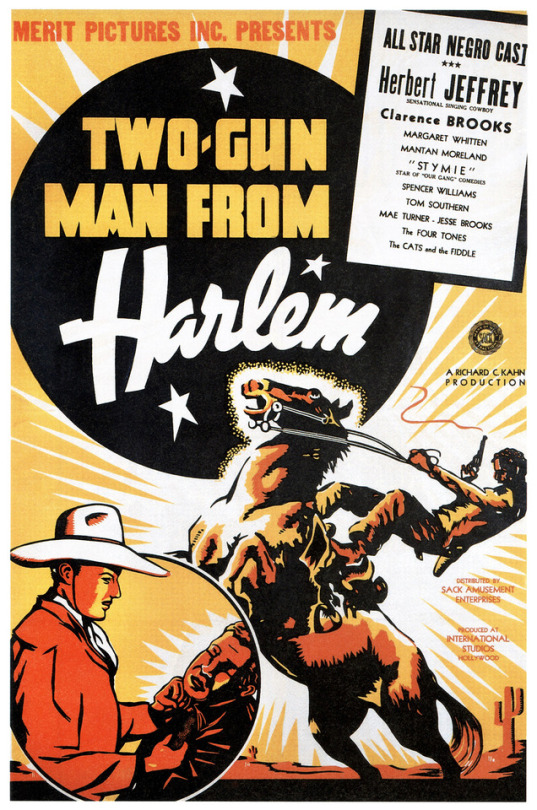
Herb Jeffries, The First Black Western Star by Raquel Stecher
“Representation matters” is a common phrase used today among film critics. While it’s considered a more modern idea, a backlash against many years of misrepresentation, one early pioneer in the 1930s saw this problem and came up with an idea to fix it. That man was Herb Jeffries.

Born in Detroit in 1913, Jeffries’s heritage represented the city’s melting pot of ethnicities including African, Italian, French, Jewish, Native American and Irish. It wasn’t until he left his community that he saw the adverse effects of segregation. Too dark to pass as white, Jeffries decided to present as black and pursue a career in blues and jazz where African-American artists were thriving. Jeffries had a deep voice, incredible vocal pitch and larger-than-life presence making him a born performer. He made his way across the country performing in New York and Chicago before finally landing in Hollywood where he met small-time movie producer Jed Buell.
Jeffries and Buell collaborated on what would become the first ever all-black Western, Harlem on the Prairie (1937). The inspiration came from Jeffries’ childhood memories of watching Westerns starring Tom Mix. The genre was devoid of black characters and Jeffries knew he could make a difference. A bit of inspiration also came from Buell himself who produced The Terror of Tiny Town (1938), a Western featuring a cast entirely comprised of little people. With the singing cowboy movement (made popular by Gene Autry) in full swing it seemed fitting for Buell and Jeffries to make a Western musical.
Buell worried that Jeffries’ pale complexion would not carry over well to black audiences. In an interview with KCETV’s Huell Howser, Jeffries said “we had trouble finding African Americans who could ride, sing and act. We tested 10 or 12 and none could do all three. But I could.” Having spent much time at his grandfather’s ranch in Ohio, Jeffries had extensive experience riding horses and lassoing ropes. Harlem on the Prairie was an instant smash. The intention was to expand the scope of what African-American actors could portray on screen by means of an all-black production, catering to black audiences and screened at black theaters. This film was successful enough that it also screened in mainstream cinemas across the country.
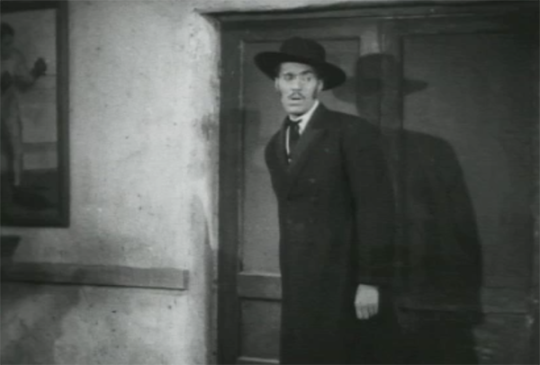
When Buell moved on to other projects, Jeffries found a new collaborator in director/producer Richard C. Kahn. They worked on three films together: TWO-GUN MAN FROM HARLEM (’38), The Bronze Buckaroo (1939) and Harlem Rides the Range (1939). These stories were adaptations of existing Westerns written by Fred Myton, retooled with different character names and added dialogue. There was no room in the budget for any additional help so it was all hands on deck. Cast members were responsible for their own stunts, Kahn worked on the screenplays and Jeffries wrote his own songs. Jeffries often joked that these were “C-pictures” because of their low-production value. Appearing with Jeffries on screen was his musical quartet The Four Tones.
Jeffries took his intended audience quite seriously. He wanted these films to be true to the Western genre while also being suitable for children. Kids weren’t interested in romance so that was toned down. In his interview with Howser, Jeffries said, “we were careful not to smoke… when we shot a guy we made sure he was the villain. Good citizens were out doing the right thing.” This foresight paid off. As he remembered, “wherever I went kids would follow me through the street, not only black kids but white kids too.”
Jeffries’ films were sometimes criticized for perpetuating black stereotypes. TWO-GUN MAN FROM HARLEM was a notable exception. The story follows Bob Blake, a ranch man falsely accused of killing a man. He’s been set up by the man’s widow, a cheating housewife caught up with a local mob syndicate. She switches Blake’s gun for the murder weapon, hence the “two-gun” reference in the title. Blake travels to Harlem, takes on the appearance of a preacher/gangster and travels back home to solve the crime under his new disguise. Along the way there are plenty of musical performances including a rendition of “I’m a Happy Cowboy”. Mantan Moreland serves as comic relief, Marguerite Whitten as a romantic interest and child actor Matthew “Stymie” Beard as a relatable figure for young audiences. What’s interesting about the quartet is that there are no white characters. Not only that, but there are no Native Americans or Mexicans either. Bob Blake is his own savior, coming to his own rescue without the help of more empowered white characters.
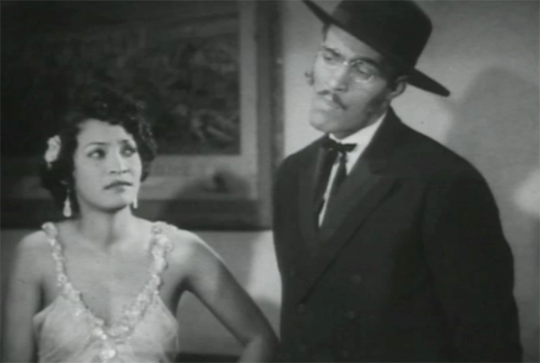
To promote TWO-GUN MAN FROM HARLEM and the other Bob Blake films, Jeffries and The Four Tones toured the South. Jeffries would ride around in his Cadillac, adorned with steer horns and his name emblazoned on the side. After screenings at black theatres, Jeffries would perform musical numbers on stage with the quartet and do cowboy tricks much to the audience’s delight. By 1939, there was a decline in black theatres and a shrinking market. Jeffries was happy to leave his career as a cowboy movie star behind when Duke Ellington invited him to join his band. He reminisced, “I was making movies, but I knew I’d rather sing with Ellington.” Until his death in 2014 at the ripe old age of 100, Jeffries could be regularly seen wearing his Stetson hat and cowboy boots and would often proclaim “I’ll always be a cowboy.”
162 notes
·
View notes
Text
Dead Men Walk - USA, 1943 - reviews
Dead Men Walk – USA, 1943 – reviews
Dead Men Walk is a 1943 American horror feature film directed by Sam Newfield from a story and screenplay by Fred Myton. It was produced by Sigmund Neufeld for Producers Releasing Corporation (PRC). The movie stars George Zucco, Mary Carlisle, Nedrick Young and Dwight Frye.
Plot:
The twin of a kindly small-town physician returns from the grave for vengeance against his brother, who secretly kill…
View On WordPress
#1943#Dead Men Walk#Dwight Frye#film#Fred Myton#George Zucco#horror#movie#PRC#public domain#review#reviews#Sigmund Neufeld
0 notes
Link
0 notes
Text
June 6, 1907: Miner Sues Tenderfoot Prospector for Shooting Pet Horse
June 6, 1907: Miner Sues Tenderfoot Prospector for Shooting Pet Horse
Note: This is an encore post from 2006.
June 6, 1907
San Bernardino
The miners of the Silver Lake camp out in San Bernardino didn’t take the tenderfoot too seriously. His name was Fred Myton and he presented himself as the son of a wealthy Salt Lake City family, come fully outfitted to strike it rich in the gold fields.
One of the miners’ amusements in the remote desert was Bobbie, a horse owned…
View On WordPress
0 notes
Photo

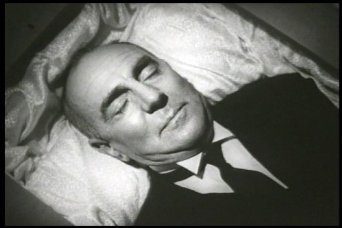
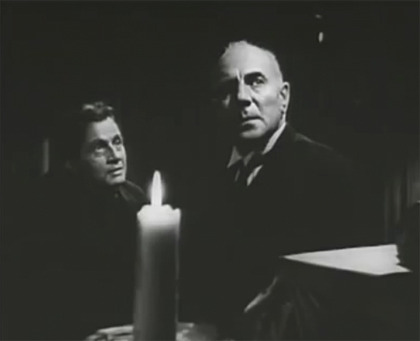
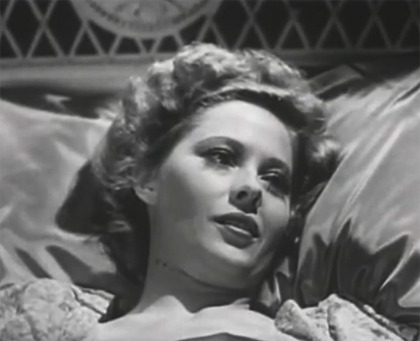
Devil's sorcery, as a dead man Returns for vengeance!
#Sam Newfield#Dead Man Walk#1943#black&white#Fred Myton#George Zucco#Mary Carlisle#Nedrick Young#Dwight Frye#Dr. Lloyd Clayton#Drama#Horror#Mystery#Vampire#twins#revenge#murder#evil twin
1 note
·
View note
Audio
From the Producers Releasing Corporation comes the Wolf Man ripoff film THE MAD MONSTER (Newfield 1942). The poverty row film stars George Zucco, Glenn Strange, Johnny Downs, & Anne Nagel. But how many more of these vengeful mad scientist plots can your deadicated hosts take?
Context setting 00:00; Synopsis 19:38; Discussion 36:32; Ranking 47:19.
#podcast#poverty row#prc#Producers Releasing Corporation#wolf man#the mad monster#sam newfield#sigmund neufeld#fred myton#johnny downs#george zucco#anne nagel#glenn strange#mad scientist#werewolves#classic hollywood#mst3k#horror#horror podcast#wolf blood#Blood Transfusions#jo-jo the dog faced boy
8 notes
·
View notes
Text
THE MAD MONSTER (1942) Reviews and overview
THE MAD MONSTER (1942) Reviews and overview
The Mad Monster is a 1942 American science fiction horror film about a mad scientist who transforms his gardener into a murderous wolfman. He uses the monster to kills his ex-colleagues one-by-one…
Directed by Sam Newfield (Fight That Ghost; The Flying Serpent; White Pongo; The Monster Maker; Dead Men Walk) from a screenplay written by Fred Myton (Dead Men Walk). Produced by Sigmund Neufeld (The…

View On WordPress
#1942#Anne Nagel#film#George Zucco#Glenn Strange#horror#movie#PRC#review#reviews#Sam Newfield#The Mad Monster#wolfman
0 notes